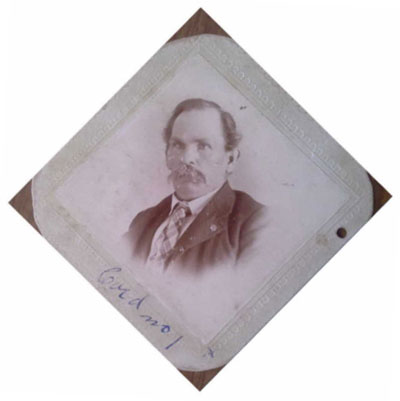When the Civil War was over, veterans of both the Union Army and the Confederate Army found total chaos as they returned home. Yes, there were men in the South who joined the Union Army. They and their families suffered much more. Most of the Union supporters lived in the northeast corner of Alabama, northwest Georgia, eastern Tennessee, and the western mountains in North and South Carolina.
Within two years after Lee’s surrender, southern farmers thought seriously about migrating west to Texas, where land was plentiful, fertile, and cheap. 1872 was the peak year for migration.
Theodore Higgins (T.H.) Sampley was one of nine children born to Jesse Sampley and his wife Debra Browder Sampley. Since there were numerous men named Jesse Sampley living in Jackson and Dekalb Counties of northeastern Alabama, T. H.’s father was known as “the cabinet maker.” Both Browder and Sampley families migrated to north Alabama in the 1840s from East Tennessee and retained their loyalty to the Union.
When the war began, T. H.’s oldest brother Oliver Miller Sampley joined the Confederate Army and died at Murfreesboro in 1862. Jesse the cabinet maker packed up his wife, five daughters and two sons, and moved back to east Tennessee where they stayed until Jesse died in 1864.
The family moved back to Fort Payne, Alabama and began to resurrect their old life. T. H. volunteered as a teamster for the Union Army from January 1864 until July 1865. Older brother served as a sergeant in the Alabama/Tennessee Independent Vidette Cavalry (USA).
The first sibling and family to leave Fort Payne was sister Rutha who married James M. McCloud, a Confederate veteran. They first settled in Titus County and were there when T. H., his wife, and three children arrived in 1878 on their way farther west. T. H. and family settled near the new community of Bryson in Jack County. There he became a prosperous farmer. Within 18 months Rutha and James McCloud arrived and organized a Methodist Church. T. H. and his family were charter members. In fact, T. H. was the only one of his four brothers who did not become a Methodist preacher.
Over the years, at least two sisters, two brothers, numerous nieces and nephews moved to Bryson. They survived a drought in 1886/1887 and the recession and another drought in 1896. Brother E. B. Sampley and his wife Mary Jane didn’t particularly like the dry, arid place during a stay in 1899-1900. Mary Jane did find the prairie dogs “darling.” E. B. and younger brother Jasper J. with their families moved back to the Fort Payne area. However, one of their daughters moved to Bryson a few years later.
Each morning after T. H. finished his farm chores, he rode his horse around Bryson, checking to see that all of his relatives were fine, visited with them, and talked politics or weather before moving on to the next family. It was at that time T. H. became known, in the family at least, as Daily. It wasn’t that he was particularly nosy, he simply cared about his extended family.
His first wife died in 1901. On July 7, 1918 the Fort Worth Star-Telegram ran an item about Daily. He and Miss Mary Grantham of Grays, Arkansas had corresponded for some time. They decided to meet in Fort Worth and marry. When they arrived, Daily met Rev. Mr. Vaughan, a mutual friend. After quickly obtaining a marriage license, the couple were married in the large main lobby in full view of the throngs of travelers passing through the station.
Mr. and Mrs. Sampley left that afternoon on the return train to Bryson.


Theodore Higgins Sampley was my great great grandfather on my Mother’s side . I enjoyed reading this .